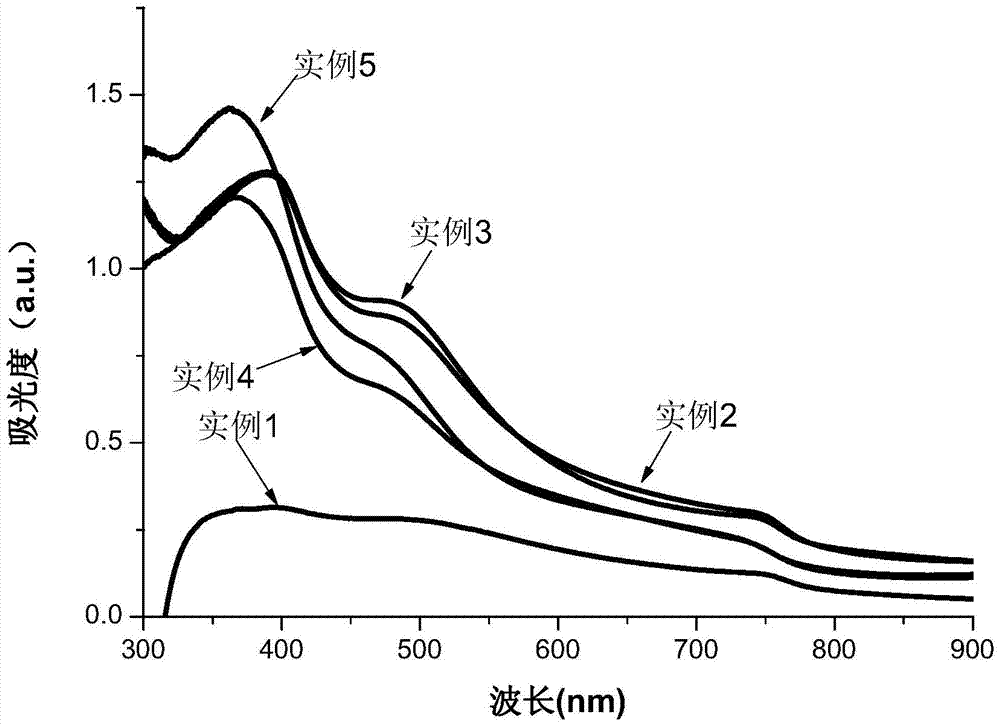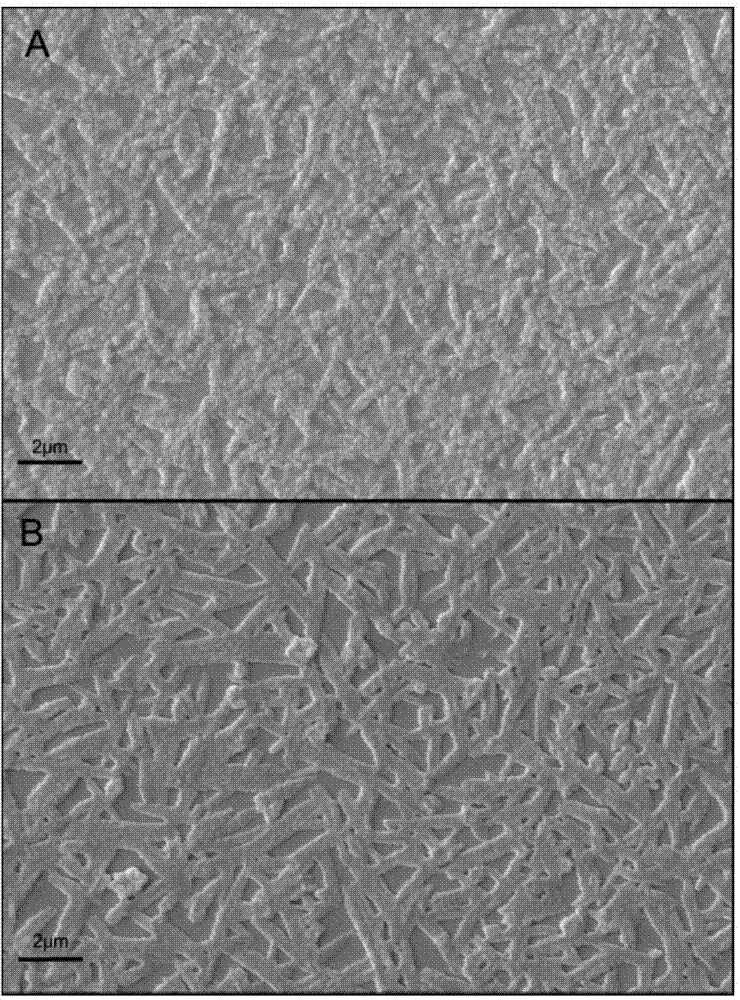Chitosan/perovskite nanometer composite film as well as preparation method and application thereof
A nano-composite and chitosan technology, applied in the fields of photoelectrochemistry and polymer chemistry, can solve the problems of poor film-forming properties of perovskite films, and achieve the effects of excellent mechanical properties, clean preparation process and improved filling rate.
- Summary
- Abstract
- Description
- Claims
- Application Information
AI Technical Summary
Problems solved by technology
Method used
Image
Examples
Embodiment 1
[0035] Weigh 1g of chitosan and dissolve in 100ml 2% (v / v) hydroiodic acid aqueous solution, stir at 1000rpm at 0°C for 8h, add enough acetone to the solution until no precipitation occurs. The obtained precipitate was washed several times with ether until the filtrate was completely colorless, and the obtained solid was chitosan iodide (CS·HI). The obtained solid was dried in a vacuum oven at 50° C. overnight. The preparation method of the methylamine salt is prepared with reference to the literature. Weigh respectively 0.083g methylamine salt, 0.2487g PbI 2 , was dissolved in 2ml of DMF with a density of 0.95g / ml, and after passing nitrogen gas for 10min, it was stirred at 500rpm in the dark at 60°C for 8 hours. After the reaction was completed, the resulting solution was filtered through a PTFE filter with a pore size of 0.45 μm. The resulting solution was spin-coated onto an ITO-coated glass slide. Measure the UV-Vis spectrum.
Embodiment 2
[0037] Weigh 1g of chitosan and dissolve in 100ml 2% (v / v) hydroiodic acid aqueous solution, stir at 1000rpm at 0°C for 8h, add enough acetone to the solution until no precipitation occurs. The obtained precipitate was washed several times with ether until the filtrate was completely colorless, and the obtained solid was chitosan iodide (CS·HI). The obtained solid was dried in a vacuum oven at 50° C. overnight. Weigh 0.0004g CS·HI, 0.083g methylamine salt, 0.2487g PbI 2 , was dissolved in 2ml of DMF with a density of 0.95g / ml, and after passing nitrogen gas for 10min, it was stirred at 500rpm in the dark at 60°C for 8 hours. After the reaction was completed, the resulting solution was filtered through a PTFE filter with a pore size of 0.45 μm. The resulting solution was spin-coated onto an ITO-coated glass slide. Measure the UV-Vis spectrum.
Embodiment 3
[0039] Weigh 1g of chitosan and dissolve in 100ml 2% (v / v) hydroiodic acid aqueous solution, stir at 1000rpm at 0°C for 8h, add enough acetone to the solution until no precipitation occurs. The obtained precipitate was washed several times with ether until the filtrate was completely colorless, and the obtained solid was chitosan iodide (CS·HI). The obtained solid was dried in a vacuum oven at 50° C. overnight. Weigh 0.0008g CS HI, 0.083g methylamine salt, 0.2487g PbI 2 , was dissolved in 2ml of DMF with a density of 0.95g / ml, and after passing nitrogen gas for 10min, it was stirred at 500rpm in the dark at 60°C for 8 hours. After the reaction was completed, the resulting solution was filtered through a PTFE filter with a pore size of 0.45 μm. The resulting solution was spin-coated onto an ITO-coated glass slide. Measure the UV-Vis spectrum.
PUM
| Property | Measurement | Unit |
|---|---|---|
| Density | aaaaa | aaaaa |
Abstract
Description
Claims
Application Information
 Login to View More
Login to View More - R&D
- Intellectual Property
- Life Sciences
- Materials
- Tech Scout
- Unparalleled Data Quality
- Higher Quality Content
- 60% Fewer Hallucinations
Browse by: Latest US Patents, China's latest patents, Technical Efficacy Thesaurus, Application Domain, Technology Topic, Popular Technical Reports.
© 2025 PatSnap. All rights reserved.Legal|Privacy policy|Modern Slavery Act Transparency Statement|Sitemap|About US| Contact US: help@patsnap.com



